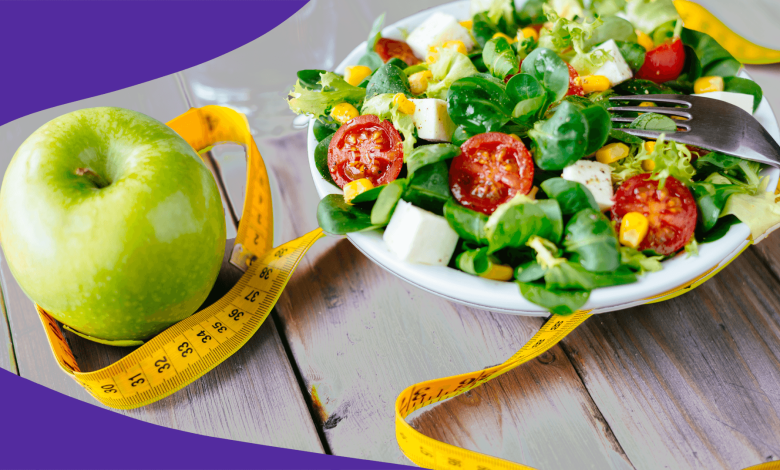Surprising Starchy Veggies That Can Support Weight Loss, According to Experts

When most people think about weight loss, the advice they often hear is to avoid starchy foods—especially potatoes, corn, or peas. Carbs have earned a bad reputation over the years, particularly in the era of low-carb and keto diets. But here’s the surprising truth: not all starches are created equal. In fact, some starchy vegetables can actually be allies in your weight loss journey—when consumed mindfully and as part of a balanced diet.
According to nutrition experts, certain starchy veggies provide fiber, resistant starch, essential vitamins, and minerals that can help regulate blood sugar, support satiety, improve gut health, and even reduce cravings. Instead of demonizing them, the key lies in choosing the right types, preparing them properly, and understanding how they interact with your metabolism.
The science behind starchy vegetables, their role in weight management, and the specific ones that experts recommend. By the end, you’ll see why some starches might deserve a place on your plate—even if your goal is to shed pounds.
Understanding Starchy Vegetables: The Basics
Before diving into the specific veggies, let’s clarify what makes a vegetable “starchy.”
- Starchy vegetables contain higher amounts of carbohydrates compared to non-starchy ones like spinach, broccoli, or zucchini.
- Common examples include potatoes, sweet potatoes, corn, peas, winter squash, plantains, and yams.
- These vegetables often get lumped into the “avoid” category during dieting because of their higher calorie and carbohydrate content.
However, the type of starch matters:
- Digestible starch: Quickly broken down into glucose, leading to spikes in blood sugar if consumed in excess.
- Resistant starch: Acts more like fiber, resisting digestion in the small intestine and feeding gut bacteria in the colon. Resistant starch is linked to better satiety, fat metabolism, and improved insulin sensitivity.
This is where the good news comes in—many starchy vegetables naturally contain resistant starch and fiber, making them supportive of weight loss when eaten in moderation.
Why Experts Recommend Certain Starchy Veggies for Weight Loss
Weight loss isn’t just about calories—it’s about hormones, satiety, gut health, and nutrient density. Starchy vegetables can support these mechanisms in several ways:
- Fiber for fullness: Fiber slows digestion, helps you feel fuller for longer, and reduces the likelihood of overeating.
- Nutrient density: Unlike refined carbs (like white bread or pastries), starchy veggies come packed with vitamins, minerals, and antioxidants.
- Steadier blood sugar: Resistant starch and fiber help blunt blood sugar spikes, which means fewer cravings and better appetite control.
- Gut microbiome support: Resistant starch acts as a prebiotic, feeding good bacteria and enhancing metabolic health.
- Sustainable energy: The complex carbs in starchy veggies release energy gradually, preventing fatigue that often leads to poor food choices.
Dr. Samantha Cassetty, a registered dietitian nutritionist (RDN), explains:
“Starchy vegetables are nutrient-dense foods that can absolutely fit into a weight-loss diet. When you prepare them in healthy ways and eat reasonable portions, they provide lasting energy and help manage hunger—two critical factors for long-term success.”
7 Surprising Starchy Veggies That Can Help With Weight Loss
Here’s the list of expert-approved starchy vegetables that can actually aid weight management when consumed wisely:
1. Sweet Potatoes
Sweet potatoes are often mistaken as a “bad carb,” but they’re actually one of the best starchy vegetables for weight loss.
Why they work:
- High in dietary fiber (about 4 grams per medium potato).
- Rich in beta-carotene (Vitamin A), supporting eye and skin health.
- Contain resistant starch, especially when cooked and cooled.
- Low glycemic index compared to white potatoes, meaning they cause smaller blood sugar spikes.
Expert tip: Bake, steam, or air-fry sweet potatoes instead of deep-frying. Pair them with protein (like chicken or beans) for a balanced meal that keeps you satisfied.
2. Green Peas
Peas often get overlooked, but these little green gems pack a big nutritional punch.
Why they work:
- High in plant-based protein (about 8 grams per cup).
- Provide fiber (7 grams per cup), which helps curb hunger.
- Rich in micronutrients like Vitamin K, Vitamin C, and manganese.
- Low energy density—meaning you can eat a good volume for relatively few calories.
Expert tip: Use peas in soups, stir-fries, or as a side dish instead of processed carbs. The combination of protein and fiber makes them one of the most satiating starchy vegetables.
3. Corn
Corn has been unfairly villainized as “fattening,” but in reality, whole corn (not corn syrup or corn chips) can support weight loss.
Why they work:
- High in insoluble fiber, which promotes digestive health.
- Contains polyphenols and antioxidants, such as lutein and zeaxanthin, which support eye health.
- Naturally gluten-free and a good alternative to refined grains.
- Provides slow-digesting carbs, supplying steady energy.
Expert tip: Opt for boiled, grilled, or roasted corn on the cob. Avoid heavy butter or cheese toppings. Popcorn (air-popped, without excess butter) is also a low-calorie, high-volume snack that supports weight control.
4. Butternut Squash
Butternut squash is a slightly sweet, nutrient-rich starchy veggie that’s perfect for weight management.
Why they work:
- Low in calories (about 82 calories per cup, cooked).
- Contains 6.6 grams of fiber per cup, which boosts satiety.
- Packed with Vitamin C and potassium, supporting immune and heart health.
- Its natural sweetness can help satisfy sugar cravings in a healthier way.
Expert tip: Roast butternut squash cubes with olive oil and herbs as a side dish, or puree into soups for a filling, low-calorie option.
5. Plantains
Plantains are common in tropical diets and are often fried, but when prepared properly, they can be a healthy starchy option.
Why they work:
- High in resistant starch, especially when eaten slightly green.
- Provide potassium and Vitamin B6, both of which support metabolism.
- Offer fiber for digestive health and satiety.
Expert tip: Instead of frying, bake or boil plantains. Pair with lean protein and vegetables for a balanced meal. Green plantains have more resistant starch than ripe ones, making them a better choice for weight management.
6. Chickpeas (Garbanzo Beans)
While technically legumes, chickpeas are often grouped with starchy vegetables.
Why they work:
- High in both protein (15 grams per cup) and fiber (13 grams per cup).
- Help regulate blood sugar and reduce appetite.
- Versatile—can be roasted for snacks, added to salads, or blended into hummus.
Expert tip: Roast chickpeas with spices for a crunchy, nutrient-dense snack that replaces chips or crackers.
7. Purple Potatoes
Purple potatoes aren’t just eye-catching—they come with unique health benefits.
Why they work:
- Contain anthocyanins, powerful antioxidants linked to reduced inflammation and improved metabolism.
- Provide fiber and resistant starch.
- Have a lower glycemic index than white potatoes.
Expert tip: Roast or boil purple potatoes with the skin on to maximize fiber intake. Pair with non-starchy veggies and protein for a balanced meal.
How to Incorporate Starchy Veggies Without Sabotaging Weight Loss
The secret to enjoying starchy vegetables lies in portion control and preparation methods. Here’s how to make the most of them:
- Stick to appropriate portions: Aim for about ½ to 1 cup of cooked starchy vegetables per meal.
- Balance your plate: Combine starches with lean protein, healthy fats, and non-starchy vegetables.
- Avoid frying: Boil, steam, roast, or air-fry instead.
- Leverage resistant starch: Cook, cool, and reheat starchy veggies (like potatoes or rice) to increase resistant starch content.
- Mind your toppings: Skip the butter, cheese, and heavy cream. Use herbs, olive oil, or Greek yogurt instead.
Common Myths About Starchy Veggies and Weight Loss
Myth 1: All carbs are bad for weight loss.
Fact: Whole-food sources of carbs, like starchy veggies, provide fiber, resistant starch, and nutrients that support weight control.
Myth 2: Potatoes make you gain weight.
Fact: Studies show that when prepared healthily and eaten in moderation, potatoes can fit into weight-loss diets.
Myth 3: You have to go low-carb to lose weight.
Fact: Weight loss depends more on calorie balance, food quality, and satiety—not just carb restriction.
The Expert Consensus
Nutrition experts agree: starchy vegetables shouldn’t be feared. Instead, they should be viewed as part of a balanced, nutrient-rich diet that supports both health and weight loss.
Registered dietitian Dr. Lisa Young sums it up:
“When we focus on whole foods like starchy vegetables, we’re not just fueling our bodies—we’re nourishing them. The fiber, vitamins, and minerals in these foods make them valuable allies in weight management.”
Final Thoughts
Starchy vegetables have been unfairly demonized in the diet world, but research and expert insights reveal a different story. Sweet potatoes, peas, corn, butternut squash, plantains, chickpeas, and purple potatoes are just a few examples of starchy veggies that can help with weight management by promoting fullness, improving gut health, and providing steady energy.
The key lies in portion control, preparation, and balance. By including these surprising starchy vegetables in your diet, you can enjoy delicious, nutrient-packed meals without derailing your weight-loss goals.




